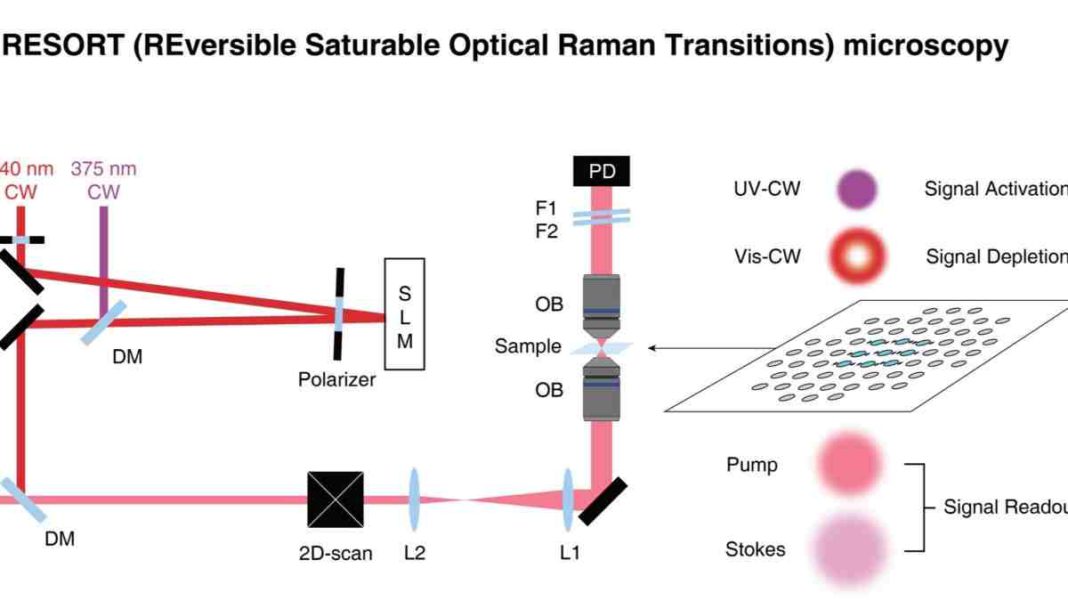JAPAN: A team of researchers, including scientists from the University of Tokyo, have developed a groundbreaking method of imaging and analysing biological samples.
By combining aspects of two leading imaging techniques, the researchers have introduced RESORT, which enables the observation of living systems with unprecedented detail.
The study, published in Science Advances, opens new possibilities for understanding biological processes and disease mechanisms.
Microscopic imaging has played a crucial role in exploring the microscopic world since the advent of optical devices.
As our ability to manipulate glass has improved, so has our ability to observe and understand the world around us, both externally and internally.
Modern microscopic imaging techniques have far surpassed the capabilities of traditional microscopes.
Two prominent technologies, super-resolution fluorescence and vibrational imaging, offer different advantages.
While the former provides excellent spatial resolution, the latter allows for the labelling of multiple constituents in cells using a wide range of colours.
Motivated by the limitations of these individual techniques, the researchers set out to create something better.
The result is RESORT (reversible saturable optical Raman transitions), a laser-based technique that combines the benefits of both super-resolution fluorescence and vibrational imaging without inheriting their drawbacks.
RESORT uses Raman scattering, a particular interaction between molecules and light, to identify the components of a sample under the microscope.
Several stages are involved in performing RESORT imaging. First, the specific components of the sample are labelled with photo-switchable Raman probes, which can control Raman scattering using different laser lights.
Next, the sample is placed within an optical apparatus that illuminates it appropriately and constructs an image. This arrangement involves irradiating the sample with two-colour infrared laser pulses, ultraviolet light, and a special doughnut-shaped visible light beam.
These combined illuminations constrain the area where Raman scattering can occur, enabling high spatial resolution during the final imaging stage.
The significance of RESORT imaging lies in achieving higher-resolution images of microscopic samples and in its ability to analyse complex interactions in living specimens without damaging or impeding them, as electron microscopes do.
The researchers envision expanding the palette of Raman probes to include more colours, enabling imaging of multiple components in action within living samples.
This breakthrough has profound implications for a deeper understanding of fundamental biological processes, disease mechanisms, and potential therapeutic interventions.
While the primary focus of the team’s research was to improve microscopic imaging in medical research, the laser design advancements made during the development of RESORT could have broader applications in areas such as materials science, where high power and precise control are essential.
The potential impact of this novel imaging technique extends far beyond biology, promising advancements in various scientific disciplines.
Also Read: The Legacy of CV Raman: The Discovery of the Raman Effect



